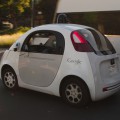Toyota is developing a new product designed to increase people’s mobility, but that has nothing to do with cars.
The automaker’s robotic division recently announced details of Project BLAID, a wearable device to help guide visually-impaired people through office buildings, shopping centers and other public areas.
Toyota hopes the device will address mobility challenges and help people with limited mobility do more, said Doug Moore, manager of Partner Robotics for Toyota, in a post on the company’s blog.
The gadget, which is worn around the shoulders, uses cameras that can recognize surroundings including doors, stairs, escalators and signs. As the wearer approaches them, the device communicates directions using speakers and vibrations. Toyota said it also plans to create buttons and voice recognition features so the user can interact with it. Eventually, it could add mapping, object identification and facial recognition technologies.
You Might Also Enjoy: Toyota Discontinues Youth-Aimed Scion Brand
Project BLAID coincides with development of the Toyota Research Institute, a billion-dollar investment focused on artificial intelligence and robotics. Started in January, TRI is headquartered in Palo Alto, Calif., close to Stanford University. A second facility near the Massachusetts Institute of Technology in Cambridge, Mass.
In addition to mobility products such as Project BLAID, the institute’s top initiatives are enhancing the safety of cars to ultimately create a vehicle that can’t crash, and increasing access to vehicles for people who can’t drive, such as seniors and those with special needs.
Toyota hasn’t said when the Project BLAID devices will be available but already it is getting attention. The Royal National Institute of Blind People in Great Britain described it as an “exciting development’’ that could open endless opportunities for the visually impaired.






